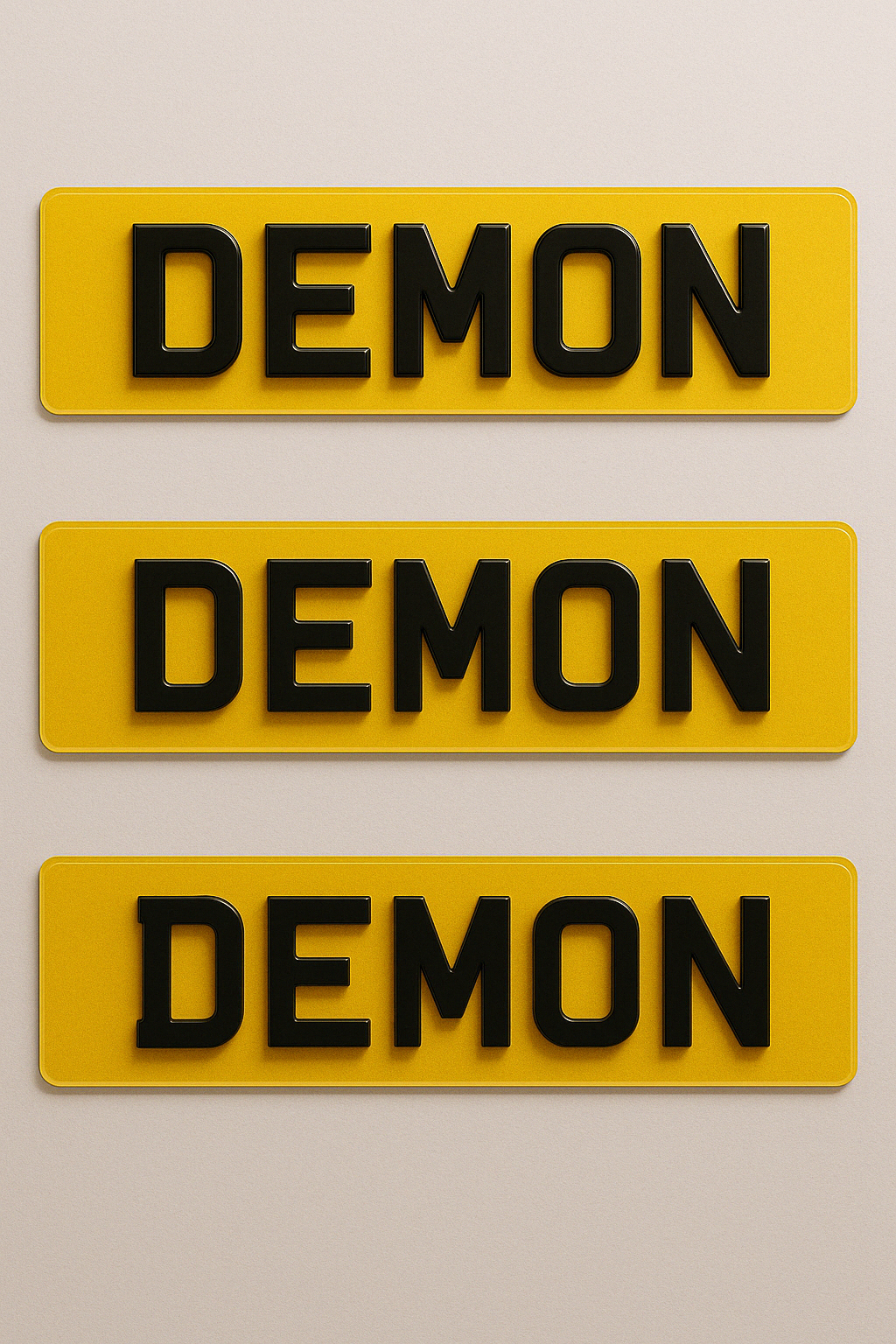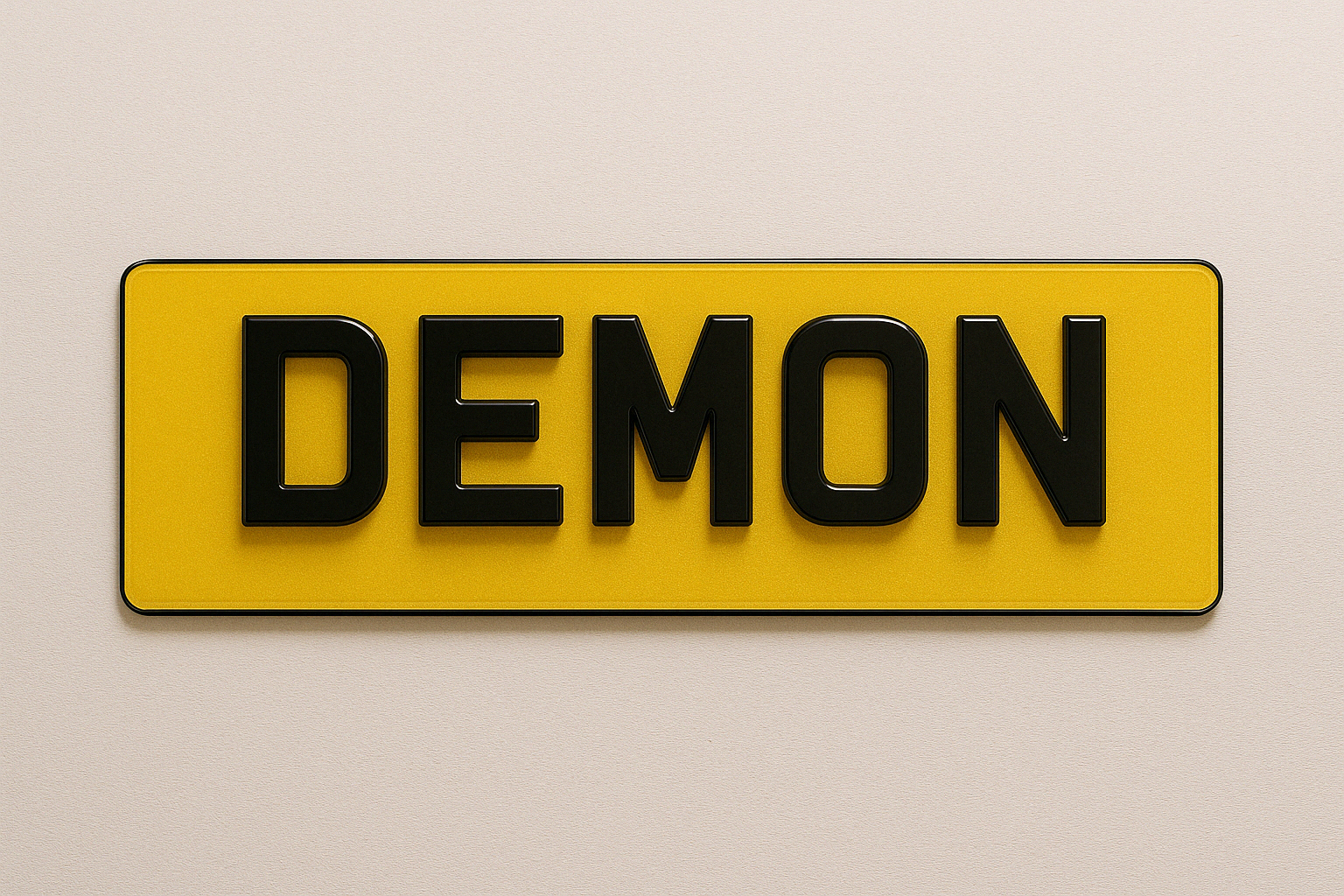Custom number plates are still turning heads—and it’s no surprise. Whether you're sprucing up your ride for a show or just want something that looks a bit smarter, a well-chosen plate does more than show your reg. It speaks for your style, too.
Lately, there’s been more chatter about 5D number plates, and honestly, it’s left a few people wondering what’s real and what’s just buzz. So, let’s clear that up.
What is a 5D Number Plate?

The name ‘5D number plate’ gets thrown around quite a bit, and, well, it’s easy to see why it sticks. At first glance, it sounds like something futuristic—maybe even a bit made up. But the truth? 5D plates are very real, and you can purchase them through Demon Plates.
So, what makes them different? In short, it’s all about how they look. A 5D plate uses multiple materials and layers with added shine and texture that gives off a bold, almost glass-like effect.
Compared to standard 3D or 4D plates, a 5D finish looks deeper, glossier, and a touch more premium. You’ll usually spot a gel or gloss overlay that helps catch the light in just the right way, perfect for those who want to stand out.
How Do 5D Number Plates Compare to 3D & 4D?

Let’s start with the basics. 3D number plates have gel characters that give them a soft, rounded finish. They add a bit of depth, sure, but the effect is more subtle. It’s a nice touch for drivers who want something custom without being too loud about it.
4D plates, on the other hand, take things up a notch. The characters are cut from acrylic and stuck on top of the plate, which makes them look sharper and more defined. They’ve become a go-to for a clean, modern look that’s still legal and fairly easy to maintain.
Now, 5D plates take everything you get with 4D—and add a layer of gloss or gel on top for a sleek, high-shine finish. You get the same raised letters, but with a bit more depth, a glassier look, and a real sense of polish. It’s that combination of sharp edges and smooth shine that sets them apart.
So, if you're after something a little flashier that still meets UK standards, 5D might just be your sweet spot.
What to Know Before Ordering a 5D Plate

Before you lock in your order, there are a few bits worth keeping in mind—nothing complicated, just the kind of things that make sure your 5D plate turns out exactly how you want it.
First off, make sure it’s legal. Any plate fitted to a road-going vehicle needs to meet DVLA rules—things like character size, spacing, and reflectivity still apply, no matter how glossy or raised the design is. That’s why it’s best to buy from a supplier who actually builds to those standards, not just sells the look.
Next, check the material and finish. A proper 5D plate uses high-quality acrylic, layered with a gel or gloss coating that holds up well through all kinds of weather. It shouldn’t peel, fade, or look dull after a few months—and it definitely shouldn’t start lifting at the edges.
Lastly, think about style vs fit. A bold 5D plate can look incredible—but on the wrong car, or paired with other mods that clash, it might feel a bit out of place. Keep your vehicle’s design in mind and go for something that complements it rather than competes.
If you're after a plate that feels like a proper upgrade without stepping over the line, 5D is a solid choice. Built right, they don’t just look good—they last.
If you're interested in exploring custom number plates further, consider the benefits of these existing options.
For more information on personalised number plates and to explore our customisation options, visit our plate builder or contact us directly.
